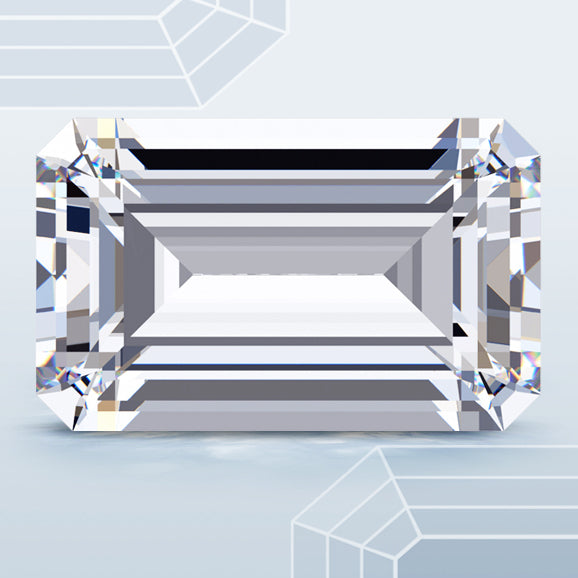
Emerald Shape Diamonds Explained
Emerald cut diamonds are diamonds cut using a design commonly found in emeralds. Most diamonds are cut with a large number of small facets. Emerald cut diamonds are cut using large rectangular facets through which the inside of the gem can easily be seen.
Only around 3% of the world’s diamonds are cut using the emerald cut; most buyers choose the much more commonplace round cuts. By selecting an emerald cut, you are choosing to have a much more unusual and relatively unique piece. Emerald cut jewellery always makes a statement about the wearer!
Buyers of emerald cut diamonds are especially appealing to buyers with a tight budget. The table facet (top flat facet) is much larger than on the more common diamond shapes giving the the impression of a much larger stone at a relatively lower cost.
The emerald cut is always rectangular with cut corners. The large table means that faults and inclusions that cannot be seen in a round cut diamond can be seen very easily in an emerald cut gem. Clarity and colour are much more critical than in stones with smaller, more complex facets.
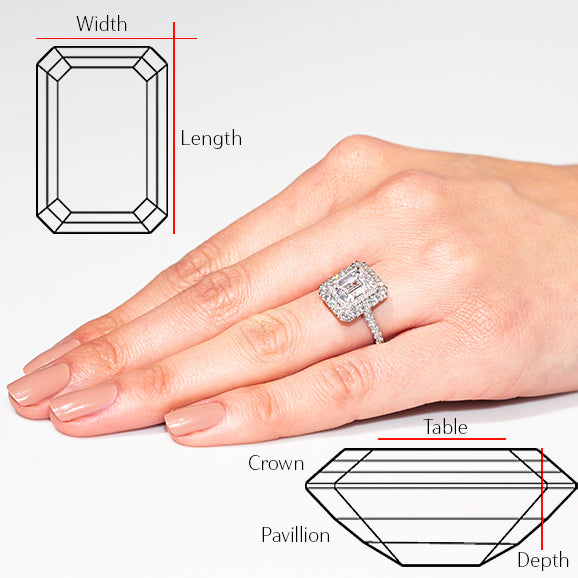
A Cut For Dramatic Lighting
The emerald cut was originally designed for use with the namesake emeralds in the 14th century. Unlike diamonds, emeralds are brittle and often contain several inclusions within each gem. The emerald cut was designed to enable cutters and jewellers to solve these problems. Over the years, people realised that the emerald cut was a good choice for diamonds, although it did not give diamonds the same brilliance and sparkle.
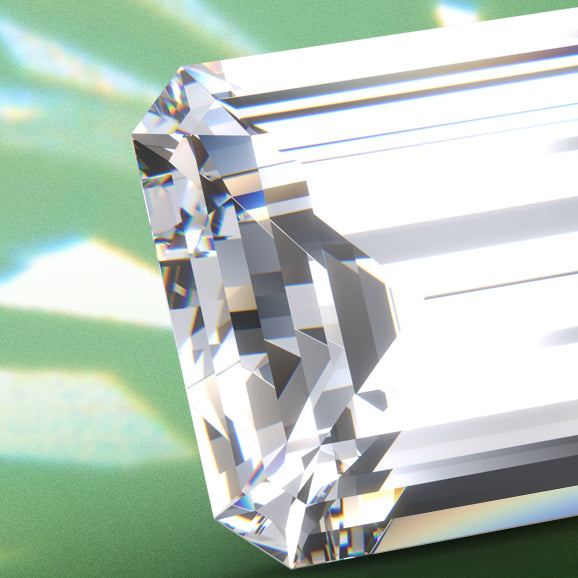
Emerald cut, when used with diamonds gave a unique look with dramatic flashes of light that are not seen with brilliant-cut diamonds. Some call the unique light show a hall of mirrors effect as the reflections from the stepped arrangement of the facets catches the light with multiple internal reflections. An emerald cut stone does not have the iridescent sparkle from the facets but more of a dramatic flashing effect.

How To Choose A Good Emerald Cut Diamond?
A good emerald cut diamond relies upon colour and clarity to make its statement. If a stone is too flawed, then the inclusions will be easily visible through the top of the diamond. Because an emerald cut diamond is not so brilliant, a yellowish gem will be obviously off-colour if too low a grade of colour is chosen.
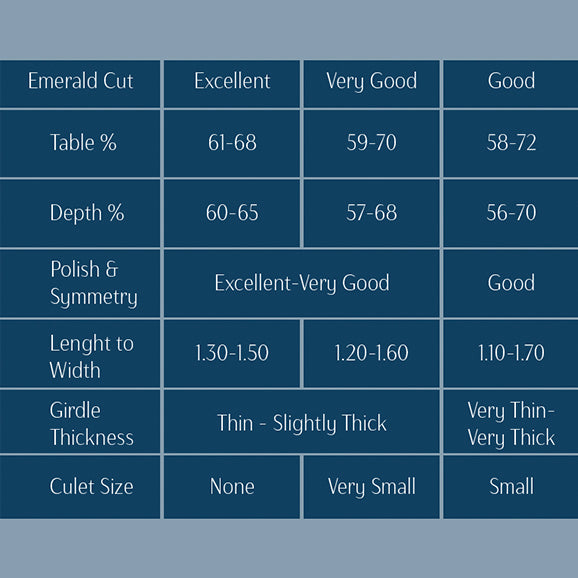
Getting The Proportions Right
There is a range of proportions that define the cut of a magnificent emerald cut diamond. A diamond with proportions that fall inside this range can be expected to look great if the clarity and colour of the stone match the quality of the cutting.
Click Here To Enlarge
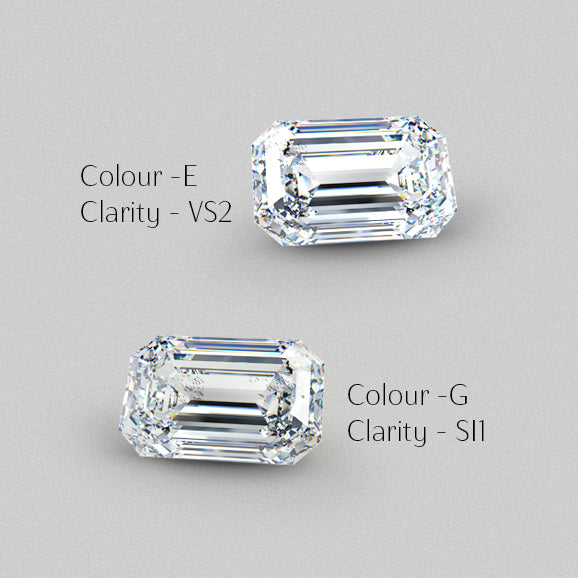
Get Clarity And Colour Right
Expert gemmologists suggest buying the highest quality of clarity and colour within your budget. Check the interior of the diamond by looking closely into the table (the top flat facet). If there are clearly visible flaws inside the diamond, it is worth looking at alternatives that are more visually clear. When checking the diamond’s grading report, look for stones that are E colour and VS2 for clarity.
This level of quality is a good balance of cost against quality, and a well-chosen stone will look very good. A VS2 diamond should only ever have inclusions that are invisible to the naked eye. One point to note: the larger the diamond you are buying, the higher the grade of clarity that is required to ensure that the gem looks pleasing to the naked eye.
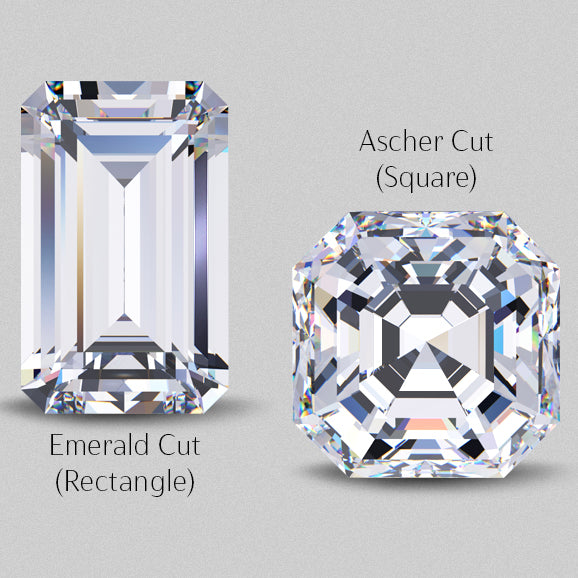
Square Or Rectangular?
Emerald cut diamonds are always rectangular, but it is a matter of taste as to how rectangular the stone should be. There is a variant of the emerald cut called 'ascher cut' which is always cut square but is otherwise very similar to the emerald cut.
The classic Emerald cut has a length to width ratio between 1.3 and 1.4. The longer the diamond is, the more impressive it can look. The emerald cut looks larger, carat for carat than a round cut diamond.
The longer rectangular shape can also flatter the handoff the wearer, making the finger appear longer and more slender as the diamond follows the length of the fingers.
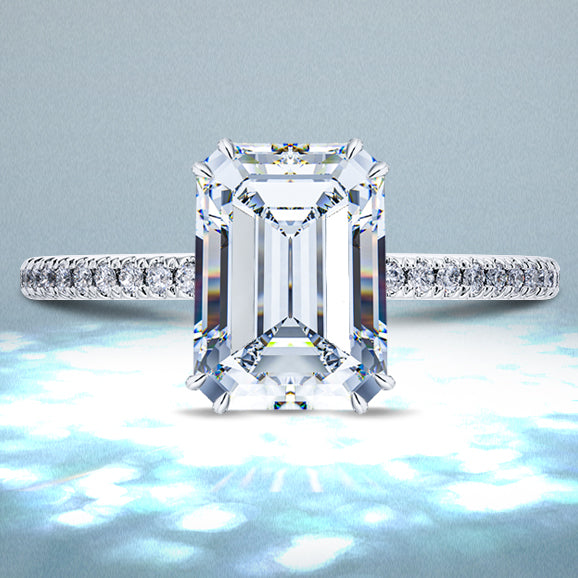
How To Choose The Right Setting?
Once you have chosen the diamond, the colour of the stone is fixed, but the setting can influence how the piece will look. A white metal, white gold or platinum, can make the stone look whiter and enhance the appearance of a slightly yellow diamond. On the other hand, a yellow gold setting can make even a pure white diamond look somewhat yellow. For this reason, it is wisest to choose a white metal setting for e cut jewellery.
Use a 4-prong claw to hold the stone in place so that the corners of the gem, its most delicate part, are protected from impact damage.
Emerald cut diamonds are a sign that the wearer is a unique person, not a crowd follower. She knows how to make a show and that not everything in diamonds is about sparkle. The dramatic flash of light from a well-cut rectangular gem is an attention grabber. The large perceived size of the gemstone will attract attention and envy from those who see it. Enjoy emerald cut diamonds in your jewellery and enjoy being one of the 3%!